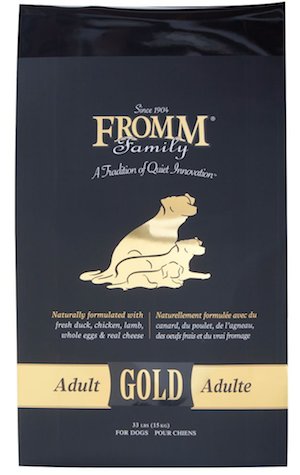- Brush frequently. The more often you brush your dog, the more hair you will remove to avoid excess shedding. …
- Bathe often. …
- Blow dry. …
- Brush after drying. …
- Consider clipping. …
- Give supplements. …
- Don’t skimp on food. …
- See a vet.
Dog hair is bane of every canine owner’s existence. No matter how many dogs you have, we can all relate to the frustration of dog hair being everywhere. Due to my own two dogs, I am aware of how annoying shedding can be.
Unfortunately, we cannot completely prevent our dogs from shedding, but there are some simple techniques we can employ to reduce the amount of fur loss.
Shedding is a completely normal occurrence for virtually all dogs. Numerous factors contribute to dog fur shedding.
Reducing shedding is a top priority for many dog owners, whether they are sick of finding fur all over the house, hate the idea of dog hair on their clothes, or have allergies to dog dander.
Since there is no breed of dog that does not shed, let’s learn how to deal with it!
Feed Your Dog a Healthy Diet
A dog will get the vitamins and nutrients they need to keep their hair follicles growing strong and resistant to breakage if they eat a complete and balanced dog food. Some dogs benefit from taking dietary supplements of omega-3 fatty acids to support joint, heart, and immune health in addition to promoting healthy hair growth. Consult your veterinarian before giving your dog supplements to find out the advantages for your dog.
It can be difficult to gauge how much your dog is drinking, but if they are shedding more than usual, you might want to keep an eye on their water bowl. A dog should generally drink one ounce of water per pound of body weight each day. This indicates that a 10-pound dog requires slightly more than a cup of fresh water. The amount of loose fur you have to clean up around the house can easily increase due to dehydrated skin, which is a major contributor to hair loss.
Some Dogs Shed More Than Others: Choosing a Breed
You should think about your household’s allergies, your ability to afford professional grooming, and the amount of time you can devote to at-home grooming when choosing a dog. Different breeds shed throughout the year at various times and rates.
Some dogs shed seasonally in the spring and fall, while other dogs shed all year long. One common misconception is that a hypoallergenic dog won’t shed or cause an allergic reaction. The reality is that truly hypoallergenic dogs are simply those that produce less dander.
Some people experience itchy eyes and a runny nose when around dogs. Three out of ten Americans, according to the Asthma and Allergy Foundation of America, have cat or dog allergies.
While some people with allergies can take medication to lessen their symptoms, others may experience dangerous breathing difficulties or skin reactions like hives. Although pet hair itself is not an allergen, it can collect dander, saliva, and urine, which can all result in allergic reactions.
Rather than dealing with the potential dangers to those in your home with pet allergies, you may want to choose one of the breeds that dont shed, like Afghan Hounds, Poodles, Irish Water Spaniels, or Portuguese Water Dogs.
Of course, no one enjoys seeing dog hair tumbleweeds on the floor. Fortunately, no matter what breed your dog is, there are a few things you can do to help keep their coat, undercoat, and dander under control all year long. You might be surprised to learn that most of these suggestions for reducing dog shedding will only cost you pennies to implement.
There are several different types of brushes, and you may need to brush your dog every day or only once a month depending on the type of coat it has:
Regardless of whether your dog sheds occasionally or constantly, using a shedding tool made specifically to remove dead hair from your dog’s coat can help you find fewer tufts floating around your house. Brushes with closely spaced stainless steel tines that remove the undercoat are one type of shedding tool, while blades with serrated teeth are another.
You Are What You Eat: How Nutrition Affects A Dog’s Shedding
One of the main factors contributing to excessive shedding is nutrition.

When owners feel their dog is shedding excessively, I always inquire about the dog’s diet. The following symptoms of a poor-quality or unbalanced diet will be seen along with how the coat looks:
By switching your dog’s diet to a higher quality, healthy dog food, these issues can be easily resolved.
This switch should always be performed as a slow transition to prevent digestive upset. Over the course of a week, you will slowly increase the ratio of old food to new food.
A dog’s hair will also become dry and brittle from dehydration, which results in breakage and excessive shedding.
Ensure that your dog has constant access to plenty of clean water and gets enough to drink.
An automatic dog watering bowl can provide your dog with a constant stream of fresh, clean water that may be more appetizing than old standing water if you suspect they aren’t drinking as much as they should.
FAQ
What home remedy can I give my dog for shedding?
- Brushing. Regular brushing is a fantastic addition to your dog’s grooming regimen because it enables you to remove any dead or loose fur (as well as dirt and debris) before it spreads throughout your home.
- Baths. …
- Diet. …
- Hydration. …
- Supplements.
What causes dogs to shed excessively?
Infections (fungal or bacterial), parasites (fleas, lice, or mites), allergies (inhalant, food-related, or topical), and kidney, liver, thyroid, or adrenal disease (including Cushing’s disease) are among the medical conditions that can result in abnormal shedding.